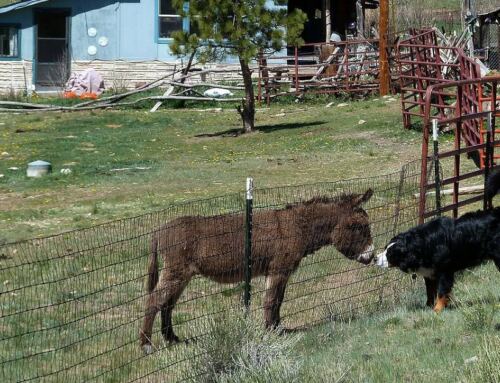Dog trainers hear it all the time- pet owners who have ‘tried everything’ or declare that positive reinforcement training doesn’t work because they’ve tried giving their dog treats and still have not been able to get the behavior they’re after. I can say with 100% certainty that if you are among those ranks that you have NOT tried everything. Everything you have tried might not have worked, but that’s different. It can feel as if you’ve tried everything, but take my word for it, you haven’t. ‘Everything’ is a tall order. You might have tried everything you can think of or have readily at hand.
The use of force, coercion or punishment is often justified because someone has ‘tried’ using positive reinforcement and been unsuccessful. Positive reinforcement works when you find something that is positively reinforcing to the dog. That you have not found what it is, does not negate the method. Even if your dog likes something, finds it rewarding, it may not be reinforcing. For something to be used as reinforcement is has to increase the likelihood that a dog will repeat a behavior in order to get it or make it happen. I may find painting my deck rewarding, it looks good when I’m done, but I do not find painting my deck positively reinforcing. I will only paint it again when faced with the possibility (threat) of having it rot, the embarrassment of having guests see an unattractive, peeling deck or the prospect of paying someone else to do it. I wish I found it positively reinforcing, it might get done more often.
A dog may happily gobble down a treat, wag their tail when you scratch their ears or tell them how marvelous they are, or gladly chase a ball, but not find any of these to be reinforcement for the behavior you are after. Or they might. My own dogs will perform some behaviors, but not all, for a food treat. And this is always subject to change. Anyone who has decided to join a gym may have had to play all kinds of tricks with themselves to get the habit started. These tricks often include some kind of reward, a favorite coffee drink after a workout or a new pair of sneakers or clothing. If the ‘going to the gym’ behavior is repeated often enough you might discover that you no longer need the reward to perform the behavior. You go for the sake of going and the workout has become rewarding, and reinforcing, in and of itself. Or whatever you were using to reward yourself no longer is enough and you need to change it in order to keep up the ‘going to the gym’ behavior.
Dog trainers who choose to use positive reinforcement techniques to build, shape or create behaviors think of themselves as detectives. We know, like someone investigating a murder that even though we don’t know who the murderer is, one exists. We know that if a behavior continues to be repeated, ‘something’ is reinforcing it. We also know that if we are having trouble getting a behavior to be repeated, we have not discovered what is reinforcing to the dog. If we decide to use a form of punishment to stop a behavior we are aware that unless we give the dog something else to do to replace the unwanted behavior we are likely to either get the unwanted behavior again, or end up with a stressed out dog who doesn’t know what to do for fear of being punished. When this happens we can see all kinds of bad behavior emerge, and unfortunately it’s a downward spiral if more punishment is applied to end these as well.
The next time you find yourself throwing up your hands in frustration, believing that you’ve tried everything, try contacting a trainer with experience in positive reinforcement and behavior modification. Good trainers see problem behaviors as puzzles to be solved, not confrontations to be won.






